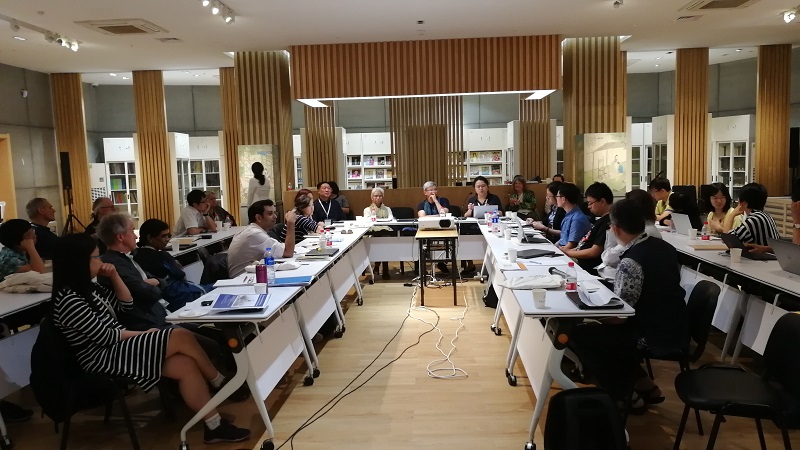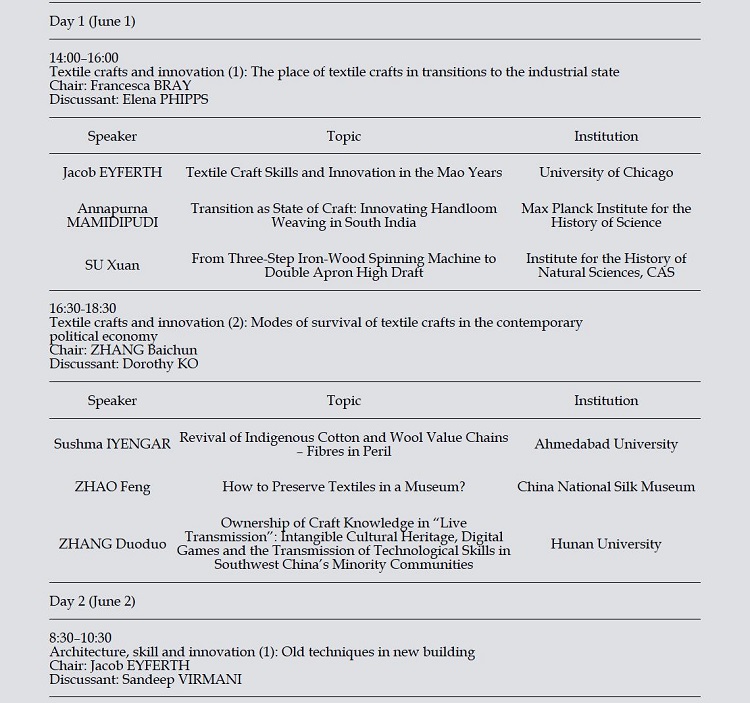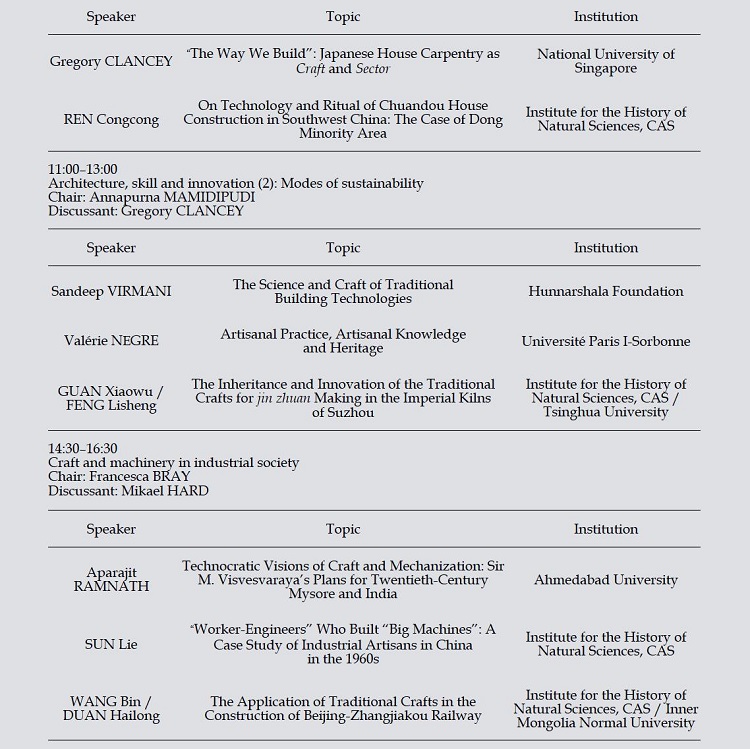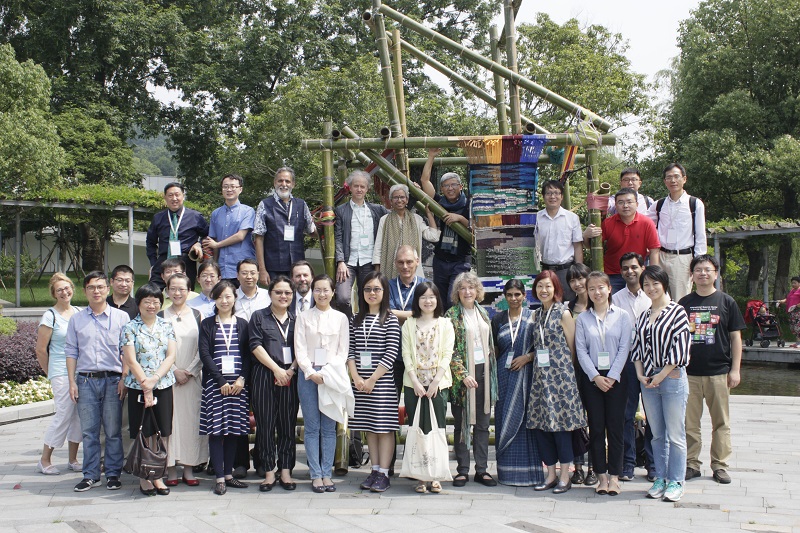- International Workshop on Craft and Innovation in Modern Societies Held in Hangzhou
The International Workshop on Craft and Innovation in Modern Societies was jointly hosted by the Society for the History of Technology (SHOT), the Institute for the History of Natural Sciences (IHNS), Chinese Academy of Sciences, and China National Silk Museum (NSM) from June 1 to June 3, 2018 in NSM. Over 30 scholars, museum curators, social activists and practitioners from China, India, Britain, the United States, Germany, Singapore, and Sweden attended the workshop to discuss the significance of craft and craft skills in the process of modernization and industrialization in the two largest Asian nations, China and India, and the relations between craft and innovation in these countries, where heritage and conservation, creativity and design, and maintenance, sustainability and social equity have become national concerns.
On the first day of the workshop, in the welcome session chaired by Professor Zhao Feng, director of NSM, Professor Francesca Bray from the University of Edinburgh introduced the origin of the event. After the fruitful 2016 SHOT-sponsored workshop entitled “Craft and Innovation,” which was held in Chennai, India, this time, SHOT worked together with IHNS and NSM to bring together participants from China, India and elsewhere, so that the contrasting experiences of the two Asian countries could hopefully trigger more thoughts. Meanwhile, it is significant for this year’s workshop to be held in NSM, as the museum is an ideal place to investigate history, technology and human practice. In his presentation, Professor Zhang Baichun, director of IHNS, reviewed the development of the study of the history of technology in China since the early twentieth century. He noted that great changes had taken place in the field starting from the 1990s, as the research model transformed from “verifying and describing achievements” to “understanding and interpreting the development of knowledge in context.” Chinese historians of technology and arts had delved into the crafts in Chinese tradition, and their efforts culminated in the recent publication of the 20-volume Complete Collection on Traditional Chinese Arts and Crafts (in Chinese). After the session, workshop participants were invited to visit NSM and enjoy demonstrations of weaving skills by craftspeople from countries including China, India, Indonesia, Madagascar, Peru, France, and so on.
During the workshop, 14 presentations on textile craft, architectural technology, and the role of craft and machinery in industrial society were organized into five sessions. Speakers, discussants of the sessions, and participants of the workshop fully engaged in the discussion of each session and the roundtable discussion that concluded the workshop. Special attention was paid to the relevance of craft and craft knowledge to our life in the present modern industrialized society, as well as to the sustainability of craft knowledge and the related practice. In reflecting upon the case studies of different communities in China, India, Japan and other countries provided by presenters, participants of the workshop questioned the previous use of seemingly ordinary words like “technology,” “craft,” “innovation,” and “tradition,” making efforts to deepen our understanding of these terms in a comparative and transnational context. The workshop not only had participants who conduct research as scholars, but also involved those who have rich experience working as social activists or practitioners. Such a variety of background made the interaction between the academic and the practitioner community in the preservation of craft yet another issue for discussion. Also emerging from the discussion was an insightful suggestion of going beyond an easy dichotomy between words that are seemingly opposite in meaning, like modern/traditional, in talking about our experience relating to technologies in the domains of textiles and construction (architecture and machines), which is crucial in interpreting the past in an analytical and objective view.

Figure 1: A speaker giving presentation during the workshop.
In the final roundtable discussion, different proposals for follow-up of the workshop were put forward. Organizers and participants of the workshop will have further discussion about the forms of publication that will come out of this three-day meeting.
Speakers in order of appearance at the workshop



Figure 2: Participants of the workshop.
(Reported by YU Yueyuan 俞月圆)




